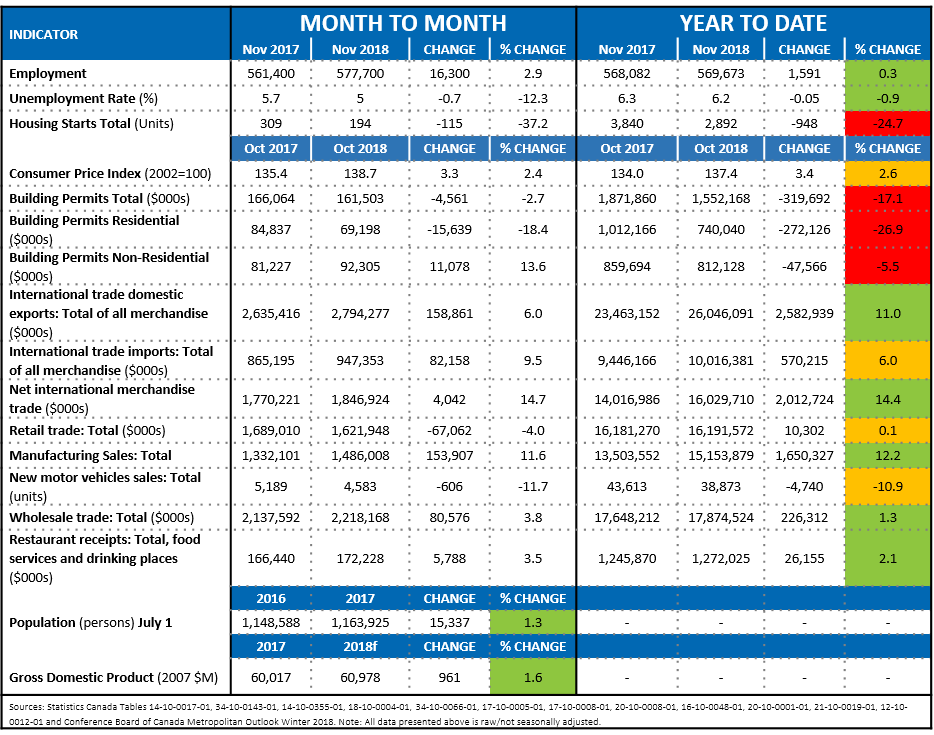
TrendLine Saskatchewan - December 2018
The Saskatchewan economy continues to show varying results in the first 10 to 11 months of 2018.

Stephen Johnson
MA
Chief Economist
Average year-to-date employment has slightly increased, with the unemployment rate decreasing. Housing starts, building permits, and new motor vehicle sales have all decreased while manufacturing sales, exports, wholesale trade, restaurant receipts, and retail trade increasing. Percentage increases in retail trade at 0.1% lag well behind the rate of inflation.
Total average year-to-date employment in Saskatchewan was up 0.3% or 1,591 positions in January to November 2018, compared to the same period in 2017. Saskatchewan has benefitted from a year-over-year increase of 16,300 positions.
TrendLine Saskatchewan - December 2018
The Saskatchewan economy continues to show varying results in the first 10 to 11 months of 2018.
Average year-to-date employment has slightly increased, with the unemployment rate decreasing. Housing starts, building permits, and new motor vehicle sales have all decreased while manufacturing sales, exports, wholesale trade, restaurant receipts, and retail trade increasing. Percentage increases in retail trade at 0.1% lag well behind the rate of inflation.
Total average year-to-date employment in Saskatchewan was up 0.3% or 1,591 positions in January to November 2018, compared to the same period in 2017. Saskatchewan has benefitted from a year-over-year increase of 16,300 positions.
Composite Indicator Actual & Seasonally Adjusted
Key Indicator This Month
|
Employment 569,673 |
|
|
Up 0.3% Year to Date |
Employment
569,673
Up 0.3% Year to Date
